With two successful albums in the span of only nine months, Simon soon found herself solidified as a famous and immensely popular singer/songwriter. In 1971, she received a Grammy Award for Best New Artist of the Year, and additionally one nomination in the “Best Pop Female Vocalist” category.
Carly Simon – “You’re So Vain”
In November of 1972, Carly Simon released her third album, and it was intended to be her big commercial breakthrough. No Secrets spent five weeks at No. 1 on the US Billboard 200 chart and quickly achieved gold status.
It was a great album that spread all over the world, spending weeks and weeks on the top of the charts in countries like Norway, Australia and Canada. But it was one song in particular – the third on the album – that would change her life forever.
You’re So Vain was the song that most people reference when talking of Carly Simon. It was a smash-hit right away, and throughout the years, it’s grown even bigger and bigger.
The song is currently ranked at No. 92 on Billboard‘s Greatest Songs of All-Time list. In 2014, it was voted as number as no 216 when Recording Industry Association of America (RIAA) asked the question of the best songs of the century. That same year, it was crowned as the ultimate song of the 1970’s by the UK Official Charts Company.
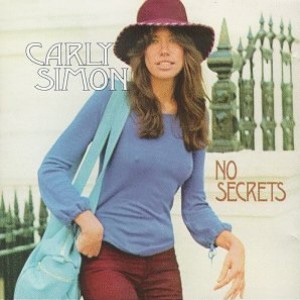
The album was recorded at the famous Trident Studios in London, England, where bands like The Beatles recorded The White Album and David Bowie made Space Oddity.
You’re So Vain – recording
You’re So Vain also held plenty of secrets when it was released, and for many years it was the subject of one of rock ‘n’ roll’s biggest mysteries. But we’ll get to that soon.
Firstly, Rolling Stones frontman Mick Jagger is uncredited on the song, even though he sings on the chorus.
At the time of the recording, several other famous artists were at the Trident Studios, and the likes of Paul McCartney, Linda McCartney, legendary record producer George Martin, and Harry Nilsson watched her record. Actually, McCartney himself pitched in to guest star with background vocals.
And then there was Mick Jagger. Carly Simon wrote in her memoir that he actually invited himself to the recording. Jagger had pursued her in London and called Trident Studios once he understood she was there.
“It was shortly after midnight. Mick and I, we were close together – the same height, same coloring, same lips,” Simon writes.
“I felt as if I was trying to stay within a pink gravity that was starting to loosen its silky grip on me. I was thrilled by the proximity, remembering all the times I had spent imitating him in front of my closet mirror.”
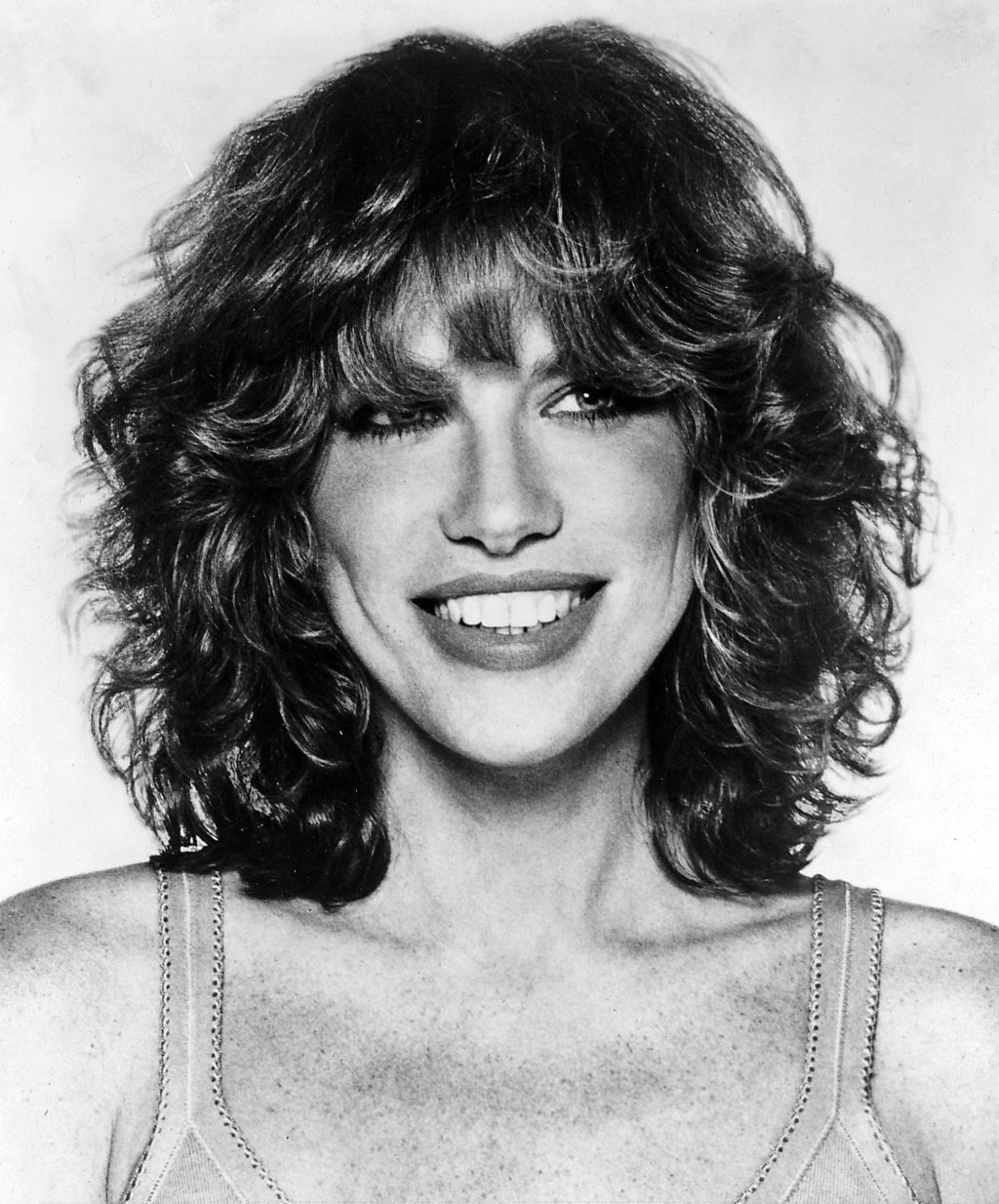
As mentioned, You’re So Vain was a rock ‘n’ roll mystery. It’s always fun to know the background story of a song, wether its about a certain event, a person, or if that one line is a reference for something special.
You’re So Vain – who is it about?
In Carly Simon’s case, no one knew who You’re So Vain was about.
Some guessed – and had conspiracy theories – that the song was about Mick Jagger. Sure, there was a pretty clear connection between the two, especially since he actually sang on the record.
But no, it turns out the rumours were wrong. The truth is that You’re So Vain – at least the second verse – is about one-time Hollywood lothario Warren Beatty, whom she dated briefly in the early 1970’s.
“You had me several years ago when I was still quite naive.
Well you said that we made such a pretty pair.
And that you would never leave.
But you gave away the things you loved and one of them was me.
I had some dreams, they were clouds in my coffee.
Clouds in my coffee”.
In her memoir, Carly revealed that the song was also about two other people, but she won’t reveal who they were.
“I don’t think so,” she told People. “At least until they know it’s about them.”
“Probably, if we were sitting over at dinner and I said: ‘remember that time you walked into the party and…’ I don’t know if I’ll do it. I never thought I would admit that it was more than one person.”
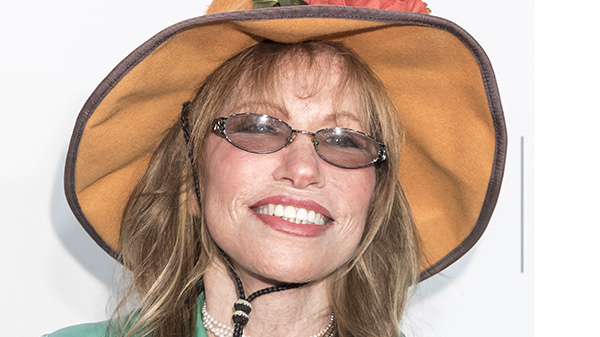
Simon dated Warren Beatty for a short while in the ’70s, and described him as a “glorious specimen” who put all other men “to shame, if looks and charm were what you were after.”
Carly Simon – James Taylor
So what about Carly Simon’s love life besides Warren? Well, she’s been married once, to singer/songwriter James Taylor.
They had met briefly as children, and then again in her dressing room in 1971. She described the latter meeting in her book. Taylor was there together with his then-girlfriend Joni Mitchell.
“He was barefoot, long-legged, long-footed – and is knees were bent,” she wrote in her memoir.
”He wore dark red, loose, wide-wale corduroys and a long-sleeved Henley with one button open, his right hand clutching a self-rule cigarette. His hair, simultaneously shiny and disheveled, fell evenly on both sides of his head, and he wore a scruffy, understated mustache, the kind so fashionable back in the yearly 1970s. He seemed both kempt and unkempt. Even sprawled out on the floor, everything about him communicated that he was, in fact, the center of something – the core of an apple, the center of a note.”

Carly Simon and James Taylor started dating later the same year and tied the knot in November of 1972. 11 years later, the couple divorced, but it wasn’t just because they didn’t have the same love for each other anymore.
Carly Simon – children
Simon explained that it mostly had to do with drugs. They had two children, now grown up and working in the music business. Daughter Sally Taylor is 46 years old and Ben Taylor’s 43.
Her memoir Boys in the Trees pretty much ends with her marriage to James Taylor. Her son hasn’t read the book. But her daughter has.
“I think he would feel more conflicted than Sally did,” Simon told ABC in 2016. “I had told her almost everything, but when she read it all together, she was just so amazed. She said, ‘I’m so proud of you for being able to tell it like it is for you.’”
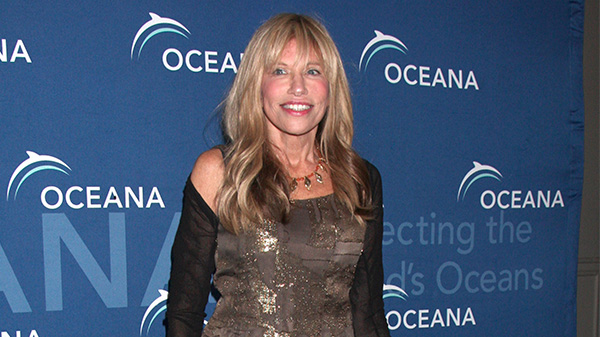
Carly Simon was later engaged to musician Russ Kunkel in 1985. She married writer James Hart in December 1987, but the couple divorced in 2007.
Carly Simon, now 75 years of age, continued making music for many years to come. And, as a by-product, continued to win several awards for her trophy cabinet.
Her 1977 worldwide hit Nobody Does It Better was the theme song of the Bond movie The Spy Who Loved Me. It’s considered by many to be one of the greatest Bond anthems of all time.
Hall of Fame entry
In 1988, she released the song Let The River Run, first featured in the 1988 movie Working Girl. With the song, she became the first singer ever to win three major awards for a single track: an Academy Award, a Grammy and a Golden Globe.
Six years later, in 1994, Carly was inducted into the Songwriters Hall of Fame.
Carly Simon lived a happy life during the 1960s and 1970s. She sure is a legendary singer with a legacy that will live on forever.
Thank you for all the wonderful music, Carly, and we hope to hear more in the future.
Please, share this story with friends and family!
When Carly Simon wrote the song You’re So Vain, her career changed forever, and yet the song remains one of rock ‘n’ roll’s biggest mysteries. Who is the person Simon is singing about?
Well, Carly herself has revealed who the classic song is about.
The 1970’s sure was a time for great music. During the 1960’s, bands like The Beatles had conquered the world, and now it was time for the likes of Bob Dylan and others to take over.
Carly Simon – singer/songwriter
One of those who did just that was Carly Simon. The wonderful singer/songwriter became one of the most popular artists when her career began to grow in the early 1970’s.
We’ve all heard You’re so Vain and various other classics from the New Yorker. But what about her life? And who was You’re so Vain actually about? This is the story of the wonderful Carly Simon.
Carly Simon was born on June 25, 1945, in New York City, the youngest daughter of an upper-class New York family. Her father Richard Simon was the co-founder of the Simon & Schuster publishing company.
Carly Simon – childhood
Now, Carly’s childhood wasn’t exactly perfect. As a third daughter, she often felt inadequate. Did her parents really want her?
“After two daughters he’d been counting on a son, a male successor to be named Carl. When I was born, he and Mommy simply added a y to the word, like an accusing chromosome: Carly,” she said.
When she was just 7 or 8 years old, Carly experienced a string of disturbing sexual encounters with a teenage boy.
“I didn’t realize that I was being used,” she said in an interview with USA Today. “I thought of myself as being in love with him. I’m sure a lot of girls go through the same thing.”
As a young girl, Carly got to see what the music industry was all about. But it would be some time before she would become the sensation she was.
Simon split her time between her family’s townhouse in Greenwich Village, New York and a wonderful estate in Stamford, Connecticut. The estate in Stamford saw the young girl surrounded by celebrities like Albert Einstein and Eleanor Roosevelt.

The Simon family were also good friends of legendary baseball player Jackie Robinson, who soon would take Carly under his wing. Jackie Robinson and his family lived in the Stamford house while their own home was under construction.
Befriended Jackie Robinson
She got to sit in the dugout at the old Ebbets Field in Brooklyn – home of the then-Brooklyn Dodgers. Soon, she became the unofficial mascot of the team.
“Jackie even taught me how to bat lefty, though it never took”, Simon wrote in her memoir Boys in the Trees (2015).
“He always had the cutest look around the side of his mouth, as if he were thinking about what he was about to say before he said it.”
However, the family would go through a tragedy. Simon’s father was strong-armed out of his own company, and died in 1960, just before his daughter’s 16th birthday.
For her part, Carly showed an early interest in music. She started singing together with brother Joey – who later became a successful writer, writing the music for the Broadway show The Secret Garden – but later, it was her and her sister who would go on to pursue a career in the business.
As Carly wrote on her website, she and sister Lucy taught themselves three chords on the guitar and hitch-hiked up to Provincetown, MA in the summer of 1964.
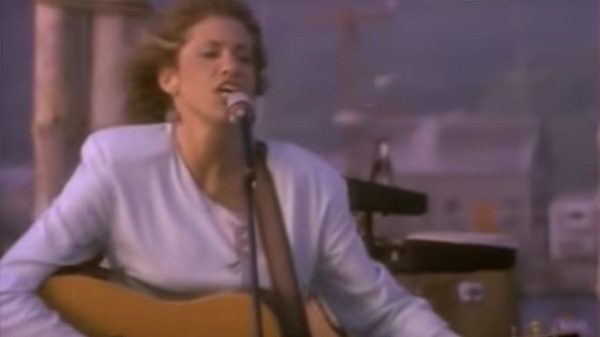
The Simon Sisters – as they called themselves – sang at a local bar called The Moors, with a repertoar consisting of folk music, as well as some of their own songs.
Touring with sister Lucy
Carly Simon and Lucy were eventually signed to Kapp Records and played a couple of clubs in Greenwich Village, opening for early comedians Woody Allen and Dick Cavett, among others, and even played in the UK.
In her memoir, Simon recalls the boat trip across the Atlantic heading home.
They were on the same boat as Sean Connery, and Carly and her sister ended up spending the trip with the actor. At that point, of course, no one could realize or even imagine that Carly would write a Bond theme song 12 years later.
The sister duo released three albums in the 1960s before Lucy left to get married.

Carly Simon was on her own, but still determined to forge a career in the music industry. However, her career had a slow start. She started working as a summer-camp counselor and as a secretary on a TV show.
Carly’s career
In February of 1971, Simon released her debut album Carly Simon. The song That’s the Way I’ve Always Heard It Should Be – an anti-marriage-song – became her first hit, reaching No. 10 on the Billboard Hot 100 list.
In October, later the same year, Simon released her second album, Anticipation. By now, things had really started to blow up. Her album went gold in two years and contained the smash hit Anticipation, which peaked at No. 13 on the Billboard pop singles chart and also at No. 3 on the Billboard Adult Contemporary chart in the United States.
According to herself, Simon wrote the song in just 15 minutes while waiting for Cat Stevens at her place, whom she was dating at the time and had made dinner for. When he arrived, the song was ready, but the date only lasted a short while.
“He gave me whispers and drawings of Blake poems,” Carly Simon said. “He told me about his childhood, his mixed Greek and Swedish parents, and we made a connection that has lasted.”
With two successful albums in the span of only nine months, Simon soon found herself solidified as a famous and immensely popular singer/songwriter. In 1971, she received a Grammy Award for Best New Artist of the Year, and additionally one nomination in the “Best Pop Female Vocalist” category.
Carly Simon – “You’re So Vain”
In November of 1972, Carly Simon released her third album, and it was intended to be her big commercial breakthrough. No Secrets spent five weeks at No. 1 on the US Billboard 200 chart and quickly achieved gold status.
It was a great album that spread all over the world, spending weeks and weeks on the top of the charts in countries like Norway, Australia and Canada. But it was one song in particular – the third on the album – that would change her life forever.
You’re So Vain was the song that most people reference when talking of Carly Simon. It was a smash-hit right away, and throughout the years, it’s grown even bigger and bigger.
The song is currently ranked at No. 92 on Billboard‘s Greatest Songs of All-Time list. In 2014, it was voted as number as no 216 when Recording Industry Association of America (RIAA) asked the question of the best songs of the century. That same year, it was crowned as the ultimate song of the 1970’s by the UK Official Charts Company.

The album was recorded at the famous Trident Studios in London, England, where bands like The Beatles recorded The White Album and David Bowie made Space Oddity.
You’re So Vain – recording
You’re So Vain also held plenty of secrets when it was released, and for many years it was the subject of one of rock ‘n’ roll’s biggest mysteries. But we’ll get to that soon.
Firstly, Rolling Stones frontman Mick Jagger is uncredited on the song, even though he sings on the chorus.
At the time of the recording, several other famous artists were at the Trident Studios, and the likes of Paul McCartney, Linda McCartney, legendary record producer George Martin, and Harry Nilsson watched her record. Actually, McCartney himself pitched in to guest star with background vocals.
And then there was Mick Jagger. Carly Simon wrote in her memoir that he actually invited himself to the recording. Jagger had pursued her in London and called Trident Studios once he understood she was there.
“It was shortly after midnight. Mick and I, we were close together – the same height, same coloring, same lips,” Simon writes.
“I felt as if I was trying to stay within a pink gravity that was starting to loosen its silky grip on me. I was thrilled by the proximity, remembering all the times I had spent imitating him in front of my closet mirror.”

As mentioned, You’re So Vain was a rock ‘n’ roll mystery. It’s always fun to know the background story of a song, wether its about a certain event, a person, or if that one line is a reference for something special.
You’re So Vain – who is it about?
In Carly Simon’s case, no one knew who You’re So Vain was about.
Some guessed – and had conspiracy theories – that the song was about Mick Jagger. Sure, there was a pretty clear connection between the two, especially since he actually sang on the record.
But no, it turns out the rumours were wrong. The truth is that You’re So Vain – at least the second verse – is about one-time Hollywood lothario Warren Beatty, whom she dated briefly in the early 1970’s.
“You had me several years ago when I was still quite naive.
Well you said that we made such a pretty pair.
And that you would never leave.
But you gave away the things you loved and one of them was me.
I had some dreams, they were clouds in my coffee.
Clouds in my coffee”.
In her memoir, Carly revealed that the song was also about two other people, but she won’t reveal who they were.
“I don’t think so,” she told People. “At least until they know it’s about them.”
“Probably, if we were sitting over at dinner and I said: ‘remember that time you walked into the party and…’ I don’t know if I’ll do it. I never thought I would admit that it was more than one person.”

Simon dated Warren Beatty for a short while in the ’70s, and described him as a “glorious specimen” who put all other men “to shame, if looks and charm were what you were after.”
Carly Simon – James Taylor
So what about Carly Simon’s love life besides Warren? Well, she’s been married once, to singer/songwriter James Taylor.
They had met briefly as children, and then again in her dressing room in 1971. She described the latter meeting in her book. Taylor was there together with his then-girlfriend Joni Mitchell.
“He was barefoot, long-legged, long-footed – and is knees were bent,” she wrote in her memoir.
”He wore dark red, loose, wide-wale corduroys and a long-sleeved Henley with one button open, his right hand clutching a self-rule cigarette. His hair, simultaneously shiny and disheveled, fell evenly on both sides of his head, and he wore a scruffy, understated mustache, the kind so fashionable back in the yearly 1970s. He seemed both kempt and unkempt. Even sprawled out on the floor, everything about him communicated that he was, in fact, the center of something – the core of an apple, the center of a note.”

Carly Simon and James Taylor started dating later the same year and tied the knot in November of 1972. 11 years later, the couple divorced, but it wasn’t just because they didn’t have the same love for each other anymore.
Carly Simon – children
Simon explained that it mostly had to do with drugs. They had two children, now grown up and working in the music business. Daughter Sally Taylor is 46 years old and Ben Taylor’s 43.
Her memoir Boys in the Trees pretty much ends with her marriage to James Taylor. Her son hasn’t read the book. But her daughter has.
“I think he would feel more conflicted than Sally did,” Simon told ABC in 2016. “I had told her almost everything, but when she read it all together, she was just so amazed. She said, ‘I’m so proud of you for being able to tell it like it is for you.’”

Carly Simon was later engaged to musician Russ Kunkel in 1985. She married writer James Hart in December 1987, but the couple divorced in 2007.
Carly Simon, now 75 years of age, continued making music for many years to come. And, as a by-product, continued to win several awards for her trophy cabinet.
Her 1977 worldwide hit Nobody Does It Better was the theme song of the Bond movie The Spy Who Loved Me. It’s considered by many to be one of the greatest Bond anthems of all time.
Hall of Fame entry
In 1988, she released the song Let The River Run, first featured in the 1988 movie Working Girl. With the song, she became the first singer ever to win three major awards for a single track: an Academy Award, a Grammy and a Golden Globe.
Six years later, in 1994, Carly was inducted into the Songwriters Hall of Fame.
Carly Simon lived a happy life during the 1960s and 1970s. She sure is a legendary singer with a legacy that will live on forever.
Thank you for all the wonderful music, Carly, and we hope to hear more in the future.
Please, share this story with friends and family!
My MIL Tried on My Wedding Dress and Ruined It — She Refused to Pay for It, So I Used My Secret Weapon
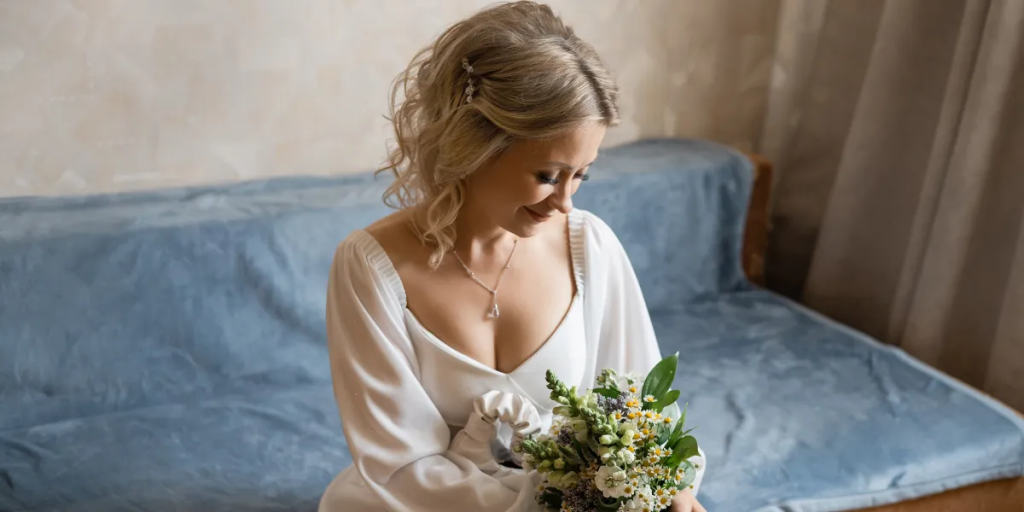
АМАМI didn’t think much of it when my future MIL kept pestering me about my wedding dress until I came home to find my $3,000 gown missing! The truth? She’d tried it on, ruined it, and refused to pay. Furious and desperate, I confronted her — armed with a secret weapon that changed everything.
I should have known something was wrong when Janet, my future mother-in-law, kept asking about my wedding dress.

A woman frowning while checking her phone messages | Source: Midjourney
For weeks, she’d text me almost daily: “Have you found the dress yet?” or “Make sure you pick something nice, dear. You don’t want to look like a doily.”
But despite her constant nagging, there was always some excuse whenever I invited her to come dress shopping with me.
“Sorry, I have a migraine,” she’d say. Or, “Oh, I’m just too busy this weekend.”
My mom noticed it too.

A woman having a conversation with her mother | Source: Midjourney
“Strange how invested she is for someone who won’t even come look,” she said one afternoon as we browsed through our third bridal boutique of the day.
I shrugged it off, trying to focus on the excitement of finding my perfect dress.
“I don’t get it either. But hey, at least I don’t have to deal with her criticizing my choices, right?”
I turned to look at a different display right near the back of the shop. That’s when I saw it: an ivory A-line gown with delicate lace detailing and a sweetheart neckline.
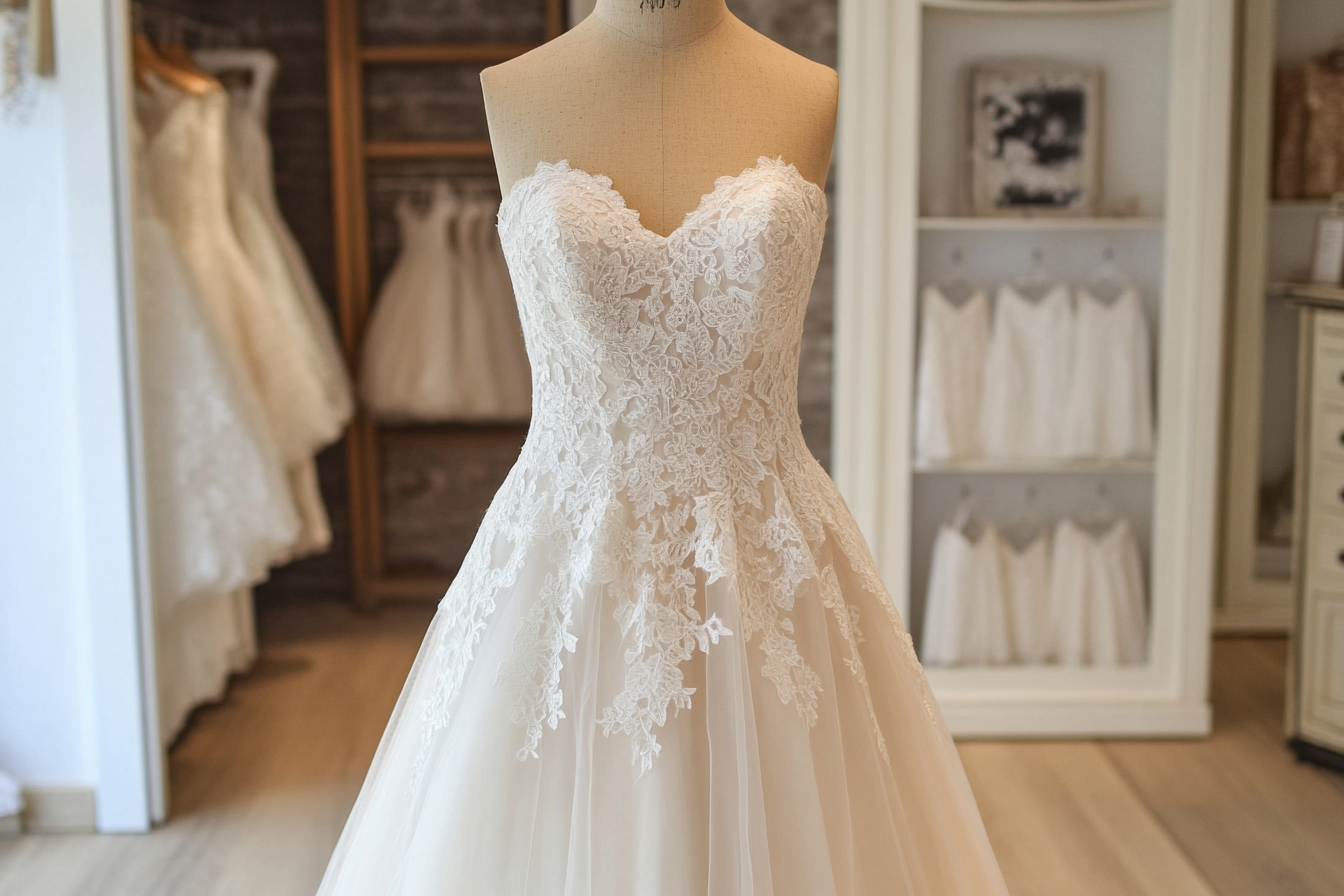
A wedding dress on display in a store | Source: Midjourney
The moment I tried it on, I knew. The way it hugged my curves before flowing out gracefully, the subtle sparkle of the beading catching the light — it was everything I’d dreamed of.
“Oh, honey,” my mom whispered, tears in her eyes. “This is the one.”
The price tag read $3,000. Which was more than I’d planned to spend, but sometimes perfection comes at a cost.
As I stood there in the fitting room, my mom snapping pictures from every angle, I felt like a real bride. Everything was falling into place.

A woman trying on a wedding dress in a store | Source: Midjourney
I texted Janet the minute I got home to tell her I’d found the perfect dress. She replied within minutes, demanding I bring the dress so she could see it.
I texted her back: “Sorry, Janet, but I’m going to keep it right here until the big day. I’ll send you the pictures my mom took.”
“No. I don’t want to see pictures!” she texted back immediately. “Bring the dress!”
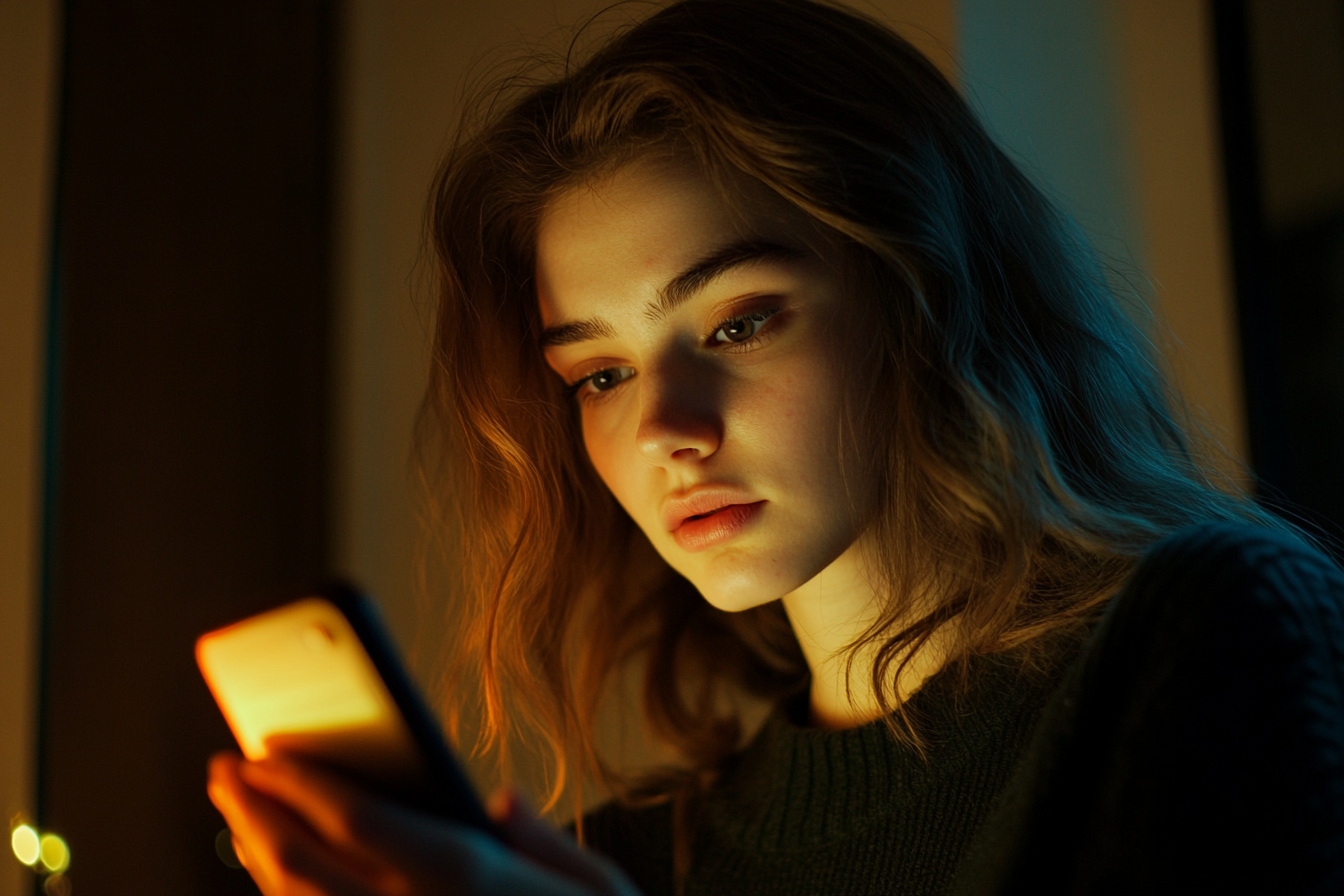
A woman reading a message on her phone | Source: Midjourney
I firmly refused again, and again. She was very insistent but eventually seemed to realize I wasn’t going to risk damaging my precious and very expensive gown by driving it across town just for her to look at.
Two weeks later, I spent the day at my mom’s house, going over wedding details and working on DIY centerpieces. When I got home that evening, something felt off.

A woman in an apartment looking puzzled | Source: Midjourney
The apartment was too quiet, and Mark’s shoes weren’t by the door where he usually kicked them off.
“Mark?” I called out, dropping my keys on the kitchen counter. No answer.
I headed to our bedroom to change clothes, and that’s when panic hit me like a bucket of ice water.
The garment bag containing my wedding dress wasn’t hanging on the back of the closet door where I’d left it. I immediately guessed what had happened.

A closet in a bedroom | Source: Pexels
My hands shook with anger as I dialed Mark’s number.
“Hey, babe,” he answered, his voice oddly hesitant.
“You took my dress to your mom’s place, didn’t you?” The words came out sharp and scared.
“She just wanted to see it, and you weren’t home, so…”
I didn’t let him finish. “Bring it back. Right now!”
When Mark walked through the door thirty minutes later, I knew something was wrong.

A guilty-looking man | Source: Midjourney
He smiled like everything was normal but the guilt in his eyes was obvious. My heart was in my throat as I took the garment bag and unzipped it, fearing the worst.
The dress inside was stretched out of shape, the delicate lace torn in places. The zipper hung crooked, broken teeth glinting mockingly in the overhead light.
“What did you do?” My voice came out as a whisper.

A shocked and upset woman in an apartment | Source: Midjourney
“What do you mean?” Mark frowned at me like he had no idea what I was talking about.
“This!” I gestured to the broken zip, the ruined lace, the stretched fabric. Tears filled my eyes as the full extent of the damage became clear. “My wedding dress is ruined!”
“It’s… not that bad. I really don’t know how that happened, honey. Maybe… it was badly made and tore when Mom opened the garment bag?”

A man feigning innocence | Source: Midjourney
“Don’t be ridiculous!” I snapped. “The only way this could’ve happened is if… oh my God! She tried on my wedding dress, didn’t she?”
“Uh…”
“How could you, Mark?” I pulled out my phone and dialed Janet’s number. “She isn’t the same size as me and even if she was, this is MY WEDDING GOWN! Not some sundress from Target.”
Janet answered the phone, and I put her on speaker.

A woman using her cell phone | Source: Pexels
“You ruined my wedding dress! The lace is torn, the zip is ruined, the fabric is stretched out… you and Mark owe me $3000 dollars to replace it.”
Mark’s jaw dropped. “You can’t be serious.”
And Janet’s reply? She laughed, actually laughed!
“Don’t be so dramatic! I’ll replace the zipper; I know exactly how to do it, and it will be as good as new.”

A woman staring at her phone in disbelief | Source: Midjourney
“No, it won’t,” I replied, my voice cracking. “Repairing the zip won’t fix the rest of the damage. I have to replace the dress, Janet. You know you shouldn’t have tried it on, and now you need to step up and fix this.”
“You’re making a big deal out of nothing,” Janet said sharply.
I looked at Mark, waiting for him to defend me. Instead, he stared at the floor.
My heart broke. I couldn’t bear to deal with him or his awful mother anymore at that moment. I hung up the call, went to the bedroom, and sobbed my eyes out while clutching my ruined dress.

A sad woman clutching a wedding dress | Source: Midjourney
Two days later, Mark’s sister Rachel showed up at my door. Her expression was grim.
“I was there,” she said without preamble. “When Mom tried on your dress. I tried to stop her, but you know how she is. I’m so sorry.”
I invited her in, and she pulled out her phone. “When I realized I couldn’t stop her, I realized there was something else I could do to help you. Here — this will make my mom pay for everything.”
She held out her phone. What I saw on the screen made me sick.
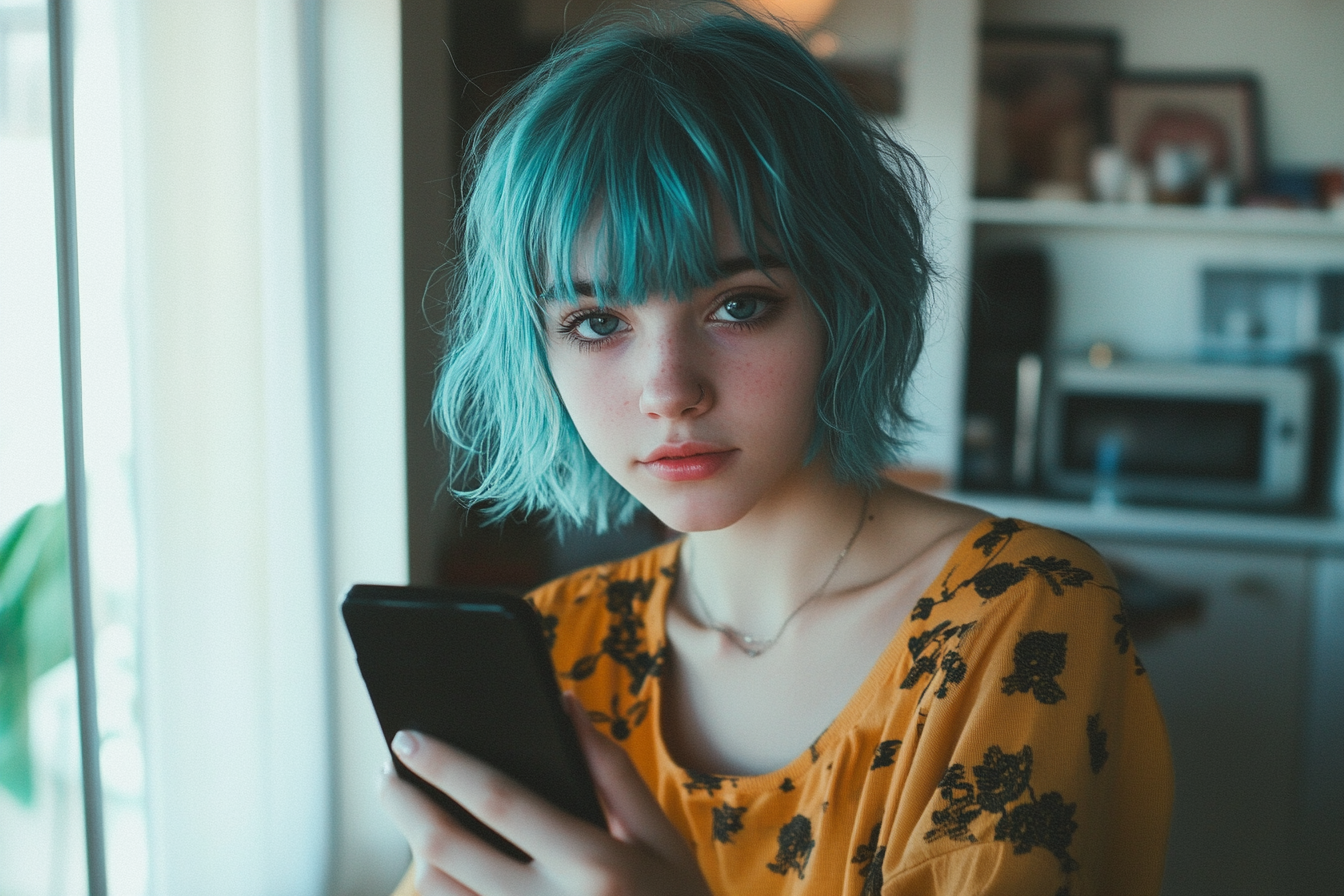
A young woman holding up her cell phone | Source: Midjourney
There was Janet, squeezed into my dress, laughing as she posed in front of her mirror. The fabric strained across her body, the zipper clearly struggling to close.
“She needs to pay for what she did,” Rachel said. “And these pictures are the key.”
I listened closely as Rachel outlined exactly how I could use the pictures to teach Janet a lesson.
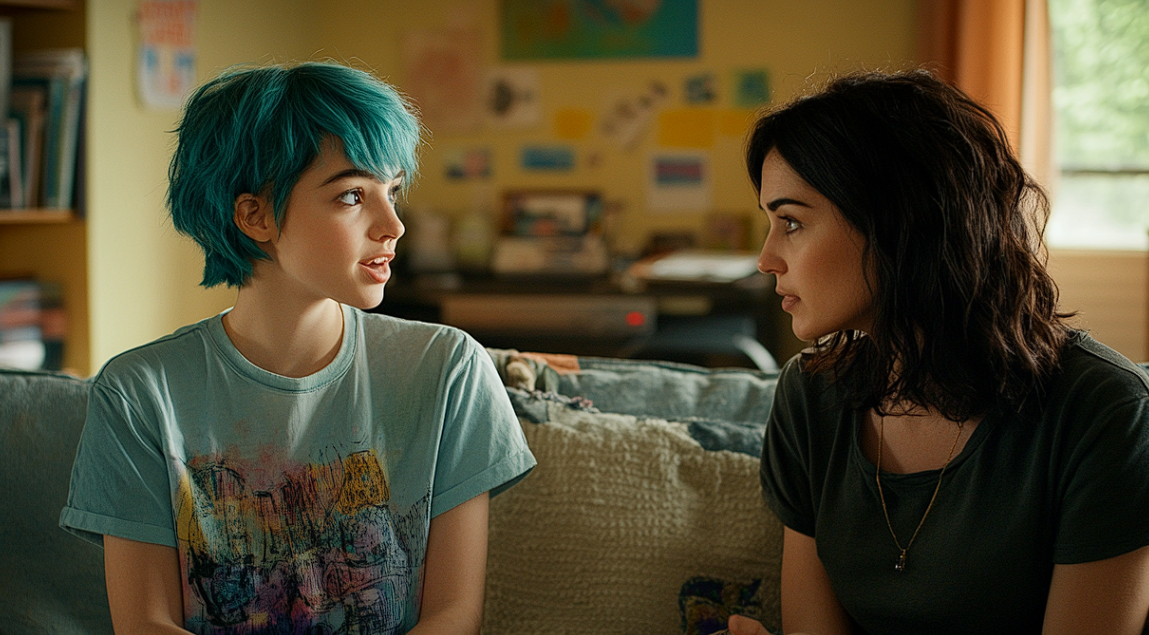
A woman listening closely to a young woman | Source: Midjourney
Armed with Rachel’s photos, I confronted Janet again and told her I’d share the photos if she didn’t pay the $3000 she owed me for ruining my dress.
“You wouldn’t dare share those,” she said, examining her manicure. “Think about what it would do to the family.”
I looked at her perfect makeup, her expensive clothes, her carefully cultivated image of the doting mother-in-law. “Try me.”

A confident woman standing with her hands on her hips | Source: Midjourney
That night, I created the Facebook post with shaking hands.
I uploaded Rachel’s photos along with pictures of my ruined dress. I wrote about how my future mother-in-law had tried on my wedding dress without permission and destroyed it. How she’d refused to take responsibility or replace it.
“A wedding dress represents so much more than just a piece of clothing,” I wrote. “It represents dreams, hopes, and trust. All of which have been destroyed along with my dress.”

An emotional woman typing on her phone | Source: Midjourney
The next morning, Janet burst into our apartment without knocking, her face red with fury.
“Take it down!” she screamed, waving her phone in my face. “Do you have any idea what people are saying about me? I’m being humiliated! My friends, my church group, everyone’s seen it!”
“You humiliated yourself when you decided to try on my dress without permission.”
“Mark!” she turned to her son. “Tell her to take it down!”

A furious woman yelling and pointing her finger | Source: Midjourney
Mark looked between us, his face pale. “Mom, maybe if you just offered to replace the dress —”
“Replace it? After what she’s done?” Janet’s voice reached a pitch that probably only dogs could hear. “Never!”
I looked at Mark, really looked at him. At the way he shrunk from conflict, the way he’d let his mother walk all over both of us, the way he’d betrayed my trust without a second thought.
“You’re right, Janet,” I said quietly. “The dress doesn’t need to be replaced.”

Close up of a heartbroken woman’s face | Source: Midjourney
I slipped my engagement ring off my finger and placed it on the coffee table. “Because there won’t be a wedding. I deserve better than a man who won’t stand up for me, and better than a mother-in-law who has no respect for boundaries.”
The silence that followed was deafening. Janet’s mouth opened and closed like a fish out of water. Mark started to speak, but I walked to the door and held it open.
“Please leave. Both of you.”
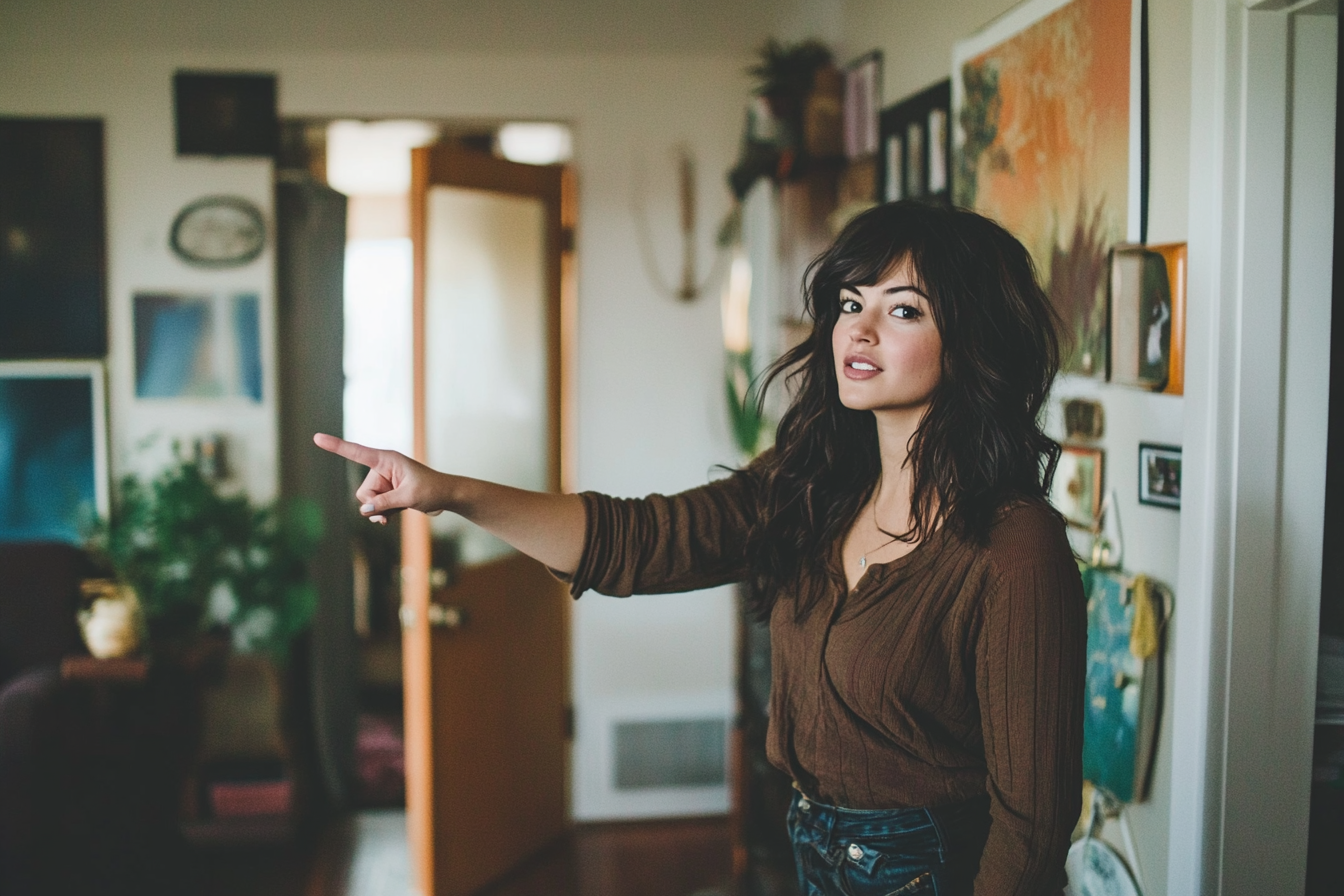
A woman pointing her finger while speaking to someone | Source: Midjourney
As I watched them go, I felt lighter than I had in months.
Here’s another story: I never believed in fortune tellers, but when my best friend insisted I visit Madame Selene, I reluctantly agreed. Then came the bombshell: my husband is hiding a betrayal. Doubts creep in, but my world spun when I overheard Selene gloating about scamming me. Who was behind this, and why?
This work is inspired by real events and people, but it has been fictionalized for creative purposes. Names, characters, and details have been changed to protect privacy and enhance the narrative. Any resemblance to actual persons, living or dead, or actual events is purely coincidental and not intended by the author.
The author and publisher make no claims to the accuracy of events or the portrayal of characters and are not liable for any misinterpretation. This story is provided “as is,” and any opinions expressed are those of the characters and do not reflect the views of the author or publisher.


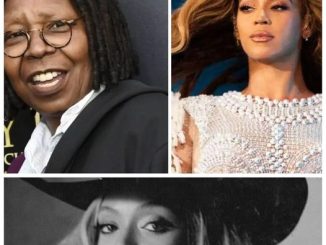
Leave a Reply